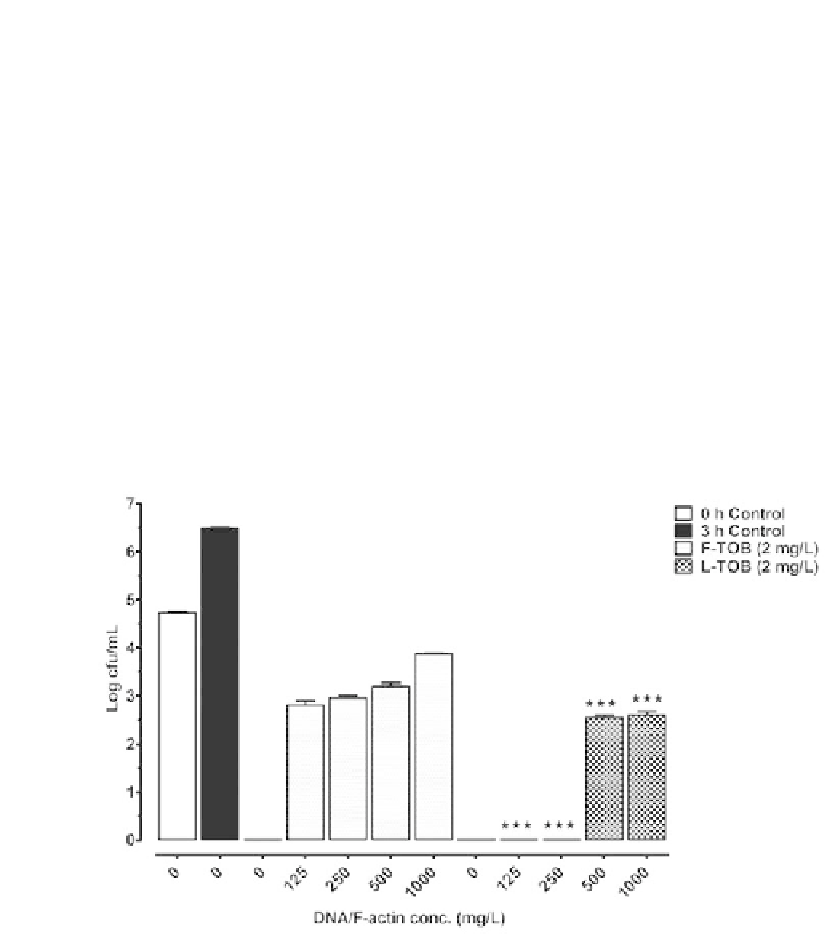Biology Reference
In-Depth Information
Separately, the inhibition of activity by DNA and F-actin, LPS, and LTA were
assessed. When DNA and F-actin were co-incubated with the tobramycin for-
mulations (Figure 2), free tobramycin failed to eradicate growth at DNA/F-actin
concentrations of 125 to 1,000 mg/l. Higher concentrations of these inhibitory
factors (500 to 1,000 mg/l) however, were required to hinder the liposomal tobra-
mycin activity. On the other hand, bactericidal activity of liposomal polymyxin B
co-incubated with DNA/F-actin remained the same as antibacterial activity was
not impaired within 3 hr (data not shown). Under the same conditions discussed
above, the effects of bacterial surface components LPS and LTA on the activity of
antibiotics were investigated. Free tobramycin (Figure 3A) activity was increas-
ingly inhibited at LPS/LTA concentrations of 1 to 1,000 mg/l. While the lower con-
centrations (1 to 10 mg/l) did not have any effect, higher concentrations (100 to
1,000 mg/l) of LPS/LTA were able to inactivate liposomal tobramycin. Polymyxin
B formulations behaved the same as tobramycin in the presence of LPS/LTA, as
indicated in Figure 3B.
Figure 2.
Bactericidal activity and inhibition of tobramycin by DNA and F-actin.
Bactericidal
concentrations of free tobramycin (F-TOB), and liposomal tobramycin (L-TOB) at 2 mg/l were
incubated with
P. aeruginosa
(ATCC 27853), or in presence of DNA/F-actin (125 to 1,000 mg/l).
Growth controls are represented at 0 hr, and 3 hr. Comparisons between free and liposomal
tobramycin was made by ANOVA one-way post t-test, and P-values were considered significant
when (***) p < 0.001.
















